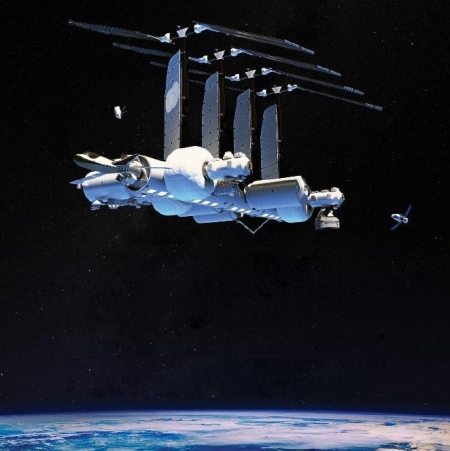Blue Origin’s CEO wants to build more suborbital New Shepard spacecraft
Capitalism in space: Bob Smith, Blue Origin’s CEO, declared yesterday that the company has more space tourist customers than it can fly on its single New Shepard suborbital spacecraft, and wants to build more to handle the potential traffic.
Jeff Bezos’ space company Blue Origin flew 14 people to space in 2021, and CEO Bob Smith on Thursday said the firm needs to build more of its New Shepard rockets to meet the demand from the space tourism market. “I think the challenge for Blue at this point is that we’re actually supply limited,” Smith said, speaking at the FAA Commercial Space Transportation Conference in Washington.
If true, this is good news, for the suborbital tourist market. It means there might be enough business for both Blue Origin and Virgin Galactic to survive and make money, at least for a few years.
At the same time, Smith’s focus seems wildly misplaced, since it is the orbital market, not the suborbital space tourism market, where the future lies, as well as the really big money. Putting tourists on short ten minute hops to space might be exciting right now, but very soon it will seem very passe, as more and more orbital tourist flights take place.
I wonder if anyone asked Smith about the status of Blue Origin’s orbital rocket, New Glenn, which remains untested and years behind schedule, all because.the BE-4 engine that will power it is also years behind schedule. It would be nice to know when the first flightworthy engines will be delivered to ULA, as well as installed on New Glenn. Those engines were promised more than a year ago, and are still not a reality.
Capitalism in space: Bob Smith, Blue Origin’s CEO, declared yesterday that the company has more space tourist customers than it can fly on its single New Shepard suborbital spacecraft, and wants to build more to handle the potential traffic.
Jeff Bezos’ space company Blue Origin flew 14 people to space in 2021, and CEO Bob Smith on Thursday said the firm needs to build more of its New Shepard rockets to meet the demand from the space tourism market. “I think the challenge for Blue at this point is that we’re actually supply limited,” Smith said, speaking at the FAA Commercial Space Transportation Conference in Washington.
If true, this is good news, for the suborbital tourist market. It means there might be enough business for both Blue Origin and Virgin Galactic to survive and make money, at least for a few years.
At the same time, Smith’s focus seems wildly misplaced, since it is the orbital market, not the suborbital space tourism market, where the future lies, as well as the really big money. Putting tourists on short ten minute hops to space might be exciting right now, but very soon it will seem very passe, as more and more orbital tourist flights take place.
I wonder if anyone asked Smith about the status of Blue Origin’s orbital rocket, New Glenn, which remains untested and years behind schedule, all because.the BE-4 engine that will power it is also years behind schedule. It would be nice to know when the first flightworthy engines will be delivered to ULA, as well as installed on New Glenn. Those engines were promised more than a year ago, and are still not a reality.

